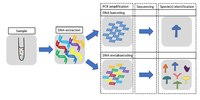
Photo from wikipedia
The identification of plants according to the Linnaean system of taxonomy is a cornerstone of ethnobotany, allowing the discipline to be a comparative science. To accomplish plant identification, ethnobotanists have… Click to show full abstract
The identification of plants according to the Linnaean system of taxonomy is a cornerstone of ethnobotany, allowing the discipline to be a comparative science. To accomplish plant identification, ethnobotanists have long relied on the collection of voucher specimens and their deposition in herbaria. Here we critically analyze the role of botanical collecting in ethnobotany and bring attention to a range of issues that can complicate, and sometimes hamper, the practice. In lieu of traditional herbarium specimens, the collection of photographic vouchers and their deposition in digital repositories is proposed as an alternative method for ethnobotanical research. The ever-improving quality and ubiquity of smartphone cameras, photographic citizen science applications like Pl@ntnet and iNaturalist, and deep learning techniques of automated photo identification are discussed as elements that are contributing to a slow revolution in the role of digital data in the field sciences. Guidelines for when plant herbarium specimens versus photographic vouchers should be considered required are laid out. Although botanical collecting will doubtless and with good reason remain a foundational practice in ethnobotany, we present the use of photographic vouchers as a valid, scientifically rigorous and, in some situations, preferred method of identification.
Journal Title: Journal of Ethnobiology
Year Published: 2023
Link to full text (if available)
Share on Social Media: Sign Up to like & get
recommendations!